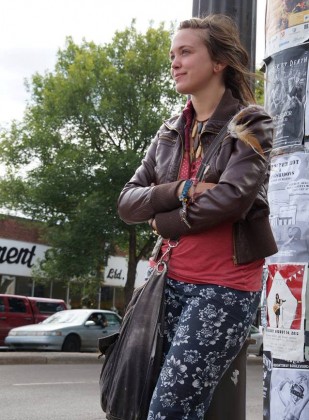HIPSTER: Even the word is annoying
Posted on August 10, 2013 By Ben Dextraze Culture, Front Slider, Life, Visual Arts
 Hipsters have been criticized from the start. At the beginning of the 20th century “hip” meant being informed on music and fashion that went against the norm. Once the suffix “–ster” was added – like “gang-ster” – you had something even edgier, but still hipsters were denounced as beatniks, hippies, stoners, punks and slackers who thought and dressed differently than everyone else. Outsiders. But the problem with a counterculture redefining “hip” is that eventually it can become a fashion trend. Real hipsters try to counteract this by taking an ironic stance – by never, ever admitting to being hip.
Hipsters have been criticized from the start. At the beginning of the 20th century “hip” meant being informed on music and fashion that went against the norm. Once the suffix “–ster” was added – like “gang-ster” – you had something even edgier, but still hipsters were denounced as beatniks, hippies, stoners, punks and slackers who thought and dressed differently than everyone else. Outsiders. But the problem with a counterculture redefining “hip” is that eventually it can become a fashion trend. Real hipsters try to counteract this by taking an ironic stance – by never, ever admitting to being hip.
Is it working?
Even fashion designers are confused by what’s hip about hipster.
Derek Jagodzinsky, clothing designer and owner of LUXX Readytowear, a midrange fashion line based in Edmonton, has never been able to figure hipster fashion out.
“I don’t even know what the hell hipsters are,” he says. “The funny thing about them is that they’re not trying to be different. They all look the same, like clones.”
Hipsters in Edmonton have their own take on hipster style. There’s lots more denim and plaid. Stores like Divine and Decadence sell vintage clothing; clubs like the Black Dog, Wunderbar, the Empress and the Pawn Shop cater to a hip clientele; Barbra Ha Salon cuts most of the stylish hipster haircuts in the city. Jagodzinsky claims the hipster trend is already starting to fade away, but according to Edmonton fashion blogger Janis Galloway, hipster chic has been mass marketed to average consumers for quite some time now – and there are no signs of it going away soon.

Does he know he’s a hipster?
“It’s become really trendy and everyone kind of dresses a little bit hipster. They don’t know it, but they do,” she explains.
Dead giveaways include black rimmed glasses, floral print vintage dresses, cardigans, messy hair and beards.
According to Galloway, hipster has become a mosaic of different influences from past trends, making it incredibly hard to categorize. Making it even harder to pinpoint is the fact that the hipster “look” has stepped off Whyte Avenue and shown up in centres of commerce and spread to the suburbs. According to a recent CBC story, Proctor and Gamble recently reported losses in revenue from poor razor sales. The apparent cause? Scruffy hipster beards.
Justin Timberlake is a hipster poster boy. Johnny Depp, Usher and even Snoop Dogg have been known to dabble in hipster style – and this has all had an effect on mainstream culture. With American Apparel selling similar clothing to what can be found at vintage stores like Decadence, there doesn’t seem to be an end in sight.
Sales associate Tessica Freeborn, who works at Decadence and sees people buying vintage clothing on a daily basis, doesn’t believe that chain stores affect what true hipsters buy.
“I’d say vintage is the number one article of clothing for hipsters – things that are more unique and colorful,” Freeborn says. “But I always thought hipster had a bad connotation to it. When somebody called someone else a hipster it was because they were jealous that the person dressed better than them.”
Freeborn denied being a hipster.
Ironically, if razor sales continue to drop off as beards get scruffier and vintage clothing makes its way into Walmart, then maybe “hipsters,” by definition, will cease to exist. They never really wanted the attention anyway.











